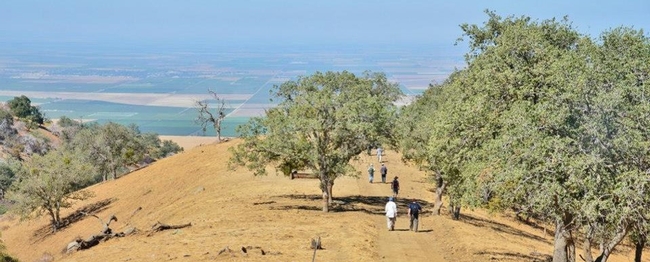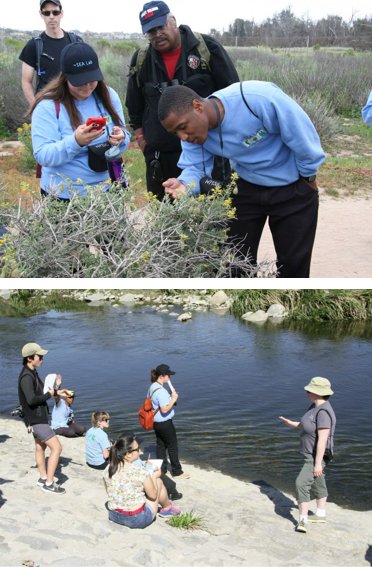Even without rain, the California Naturalist Program blooms in Southern California
In the concrete jungle of Los Angeles, people sometimes forget that Southern California actually has a wealth of natural open spaces. From the Mojave desert to four National Forests, Southern California supports vast wilderness spaces, many just a stone's throw from major cities. And if one looks closely, even those urban centers are filled with recreational parks and trails in an attempt to sate our appetite to connect with nature.
The University of Southern California Sea Grant program and the LA Conservation Corps SEA Lab teamed up to expose young adults from underserved communities to the coastal ecosystems of Southern California and potential jobs in the environmental field. The Dominguez Rancho Adobe Museum brings together California's rich cultural and natural histories in the heart of south Los Angeles County. Additional CalNat programs will soon be popping up in Cambria, Carlsbad, Riverside, Ojai, and Big Bear, and we're working to develop partnerships in San Diego and Orange Counties and along the L.A. River.
The CalNat curriculum highlights the incredible diversity of our state; the California Floristic Province is considered one of the 25 global biodiversity hotspots. This designation means that the region is home to a huge number of endemic species (those found nowhere else), but also that it shows an alarmingly high degree of habitat loss. Our mild Mediterranean climate and varying topography contribute to a diversity of species, but these are also attractive features to humans.
The 10 counties that define Southern California cover only a third of the state geographically, but they hold nearly two-thirds of the population, more than 22 million people. What an amazing pool of potential naturalists! And in neat symmetry with our diversity in geology and biology, perhaps no place in California exemplifies demographic diversity like Los Angeles. As our program expands, especially in the southern part of the state, CalNat is placing great emphasis on bringing our approach of “stewardship through discovery and action” to participants from a broad range of backgrounds.
But interpreting nature in Southern California holds unique challenges. In this arid land, agriculture and urban residents fight fiercely over scarce water (much of it imported from elsewhere), an even more contentious resource in our current drought conditions. And fire, though common throughout the state, is a particularly prickly topic in a region with so many homes.
Urban ecology is an emerging science built around the complexity of survival pressures and species interactions in human-impacted environments. In Southern California, dense human populations live cheek-by-jowl with coyotes, raccoons, rattlesnakes, bears, and mountain lions, and our habits and infrastructure influence their movements. Human development often fragments natural habitats, creating isolated islands that may not support viable populations of native species and may favor invasions by non-natives. As these environments lose functionality, we lose important “ecosystem services,” such as flood buffering by coastal wetlands.
So it's all the more important that Southern Californians take a greater interest in understanding and shaping our place in the natural world. If we can forge meaningful connections with the natural resources in the places we live, we can learn to protect those resources. This is already starting to happen, with initiatives like L.A.'s Sustainable City pLAn, the new San Gabriel Mountains National Monument, and countless Internet blogs about local hiking trails, not to mention plenty of conservation organizations that have operated in Southern California for years and often partner with CalNat to offer courses.
In 2014, nearly 200 California Naturalists from partner organizations throughout the state came together in Asilomar for a conference to appreciate our natural resources and to celebrate each other's efforts in habitat restoration, citizen science, and interpretation. But our CalNat community has grown immensely, and we expect an even greater number to join us for field trips, lectures, trainings, and fun when we convene again in 2016, this time in Southern California. In the meantime, CalNat courses will continue to spring up all over the Southland, so those 22 million people won't have to fight traffic to find a class, and some nature, close to home.





Please bring more partnerships. Try reaching out to Mount San Antonio College in their biology dept., try Rancho Santa Ana Botanical Gardens through their college affliation, The Santa Ana Watershed Project (Chino) and Fullerton College (The Fullerton Arboretum). These are just a few ideas hope to see more local training opportunities come available.
Thank you.
Posted by E. Haffner on September 3, 2015 at 1:45 AM